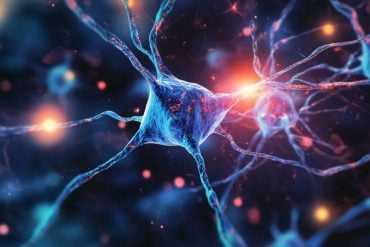Summary: Hyperactive microglia immune cells may play a significant role in the development of ALS, researchers report.
Source: Cedars Sinai
Hyperactive immune cells in the brain may play a role in the early development of the neurodegenerative disease Amyotrophic lateral sclerosis (ALS), and a form of dementia that strikes younger people, according to a study conducted by investigators from Cedars-Sinai and published in the journal Neuron.
“This immune activity is detectable in laboratory mice even before damage to the brain occurs, so the finding could eventually lead to treatments that slow or even stop disease progression at an early stage,” said Deepti Lall, PhD, lead author of the study and project scientist in the Regenerative Medicine Institute at Cedars-Sinai.
ALS, also known as Lou Gehrig’s disease, damages nerve cells in the brain and spinal cord, and is diagnosed in 5,000 people in the U.S. each year. Frontotemporal dementia (FTD) is a group of disorders that cause loss of nerve cells in the areas of the brain that manage memory, language and emotions, and can strike people as young as 40.
“ALS and FTD represent two of the most devastating and fatal neurodegenerative disorders, and a mutation of the C9orf72 gene is their most frequent cause,” Lall said. “The gene helps brain cells remove and clear waste products, and our study provides novel insight into how C90rf72 mutation affects microglial cells, the resident immune cells of the brain.”
Lall and colleagues found that laboratory mice with a C9orf72 genetic mutation performed poorly in a maze test that measures learning and memory, compared to mice that did not have the mutation. When researchers analyzed the brains of these mice, they discovered that the microglial cells were in a hyper-active state, clearing away waste products, but also engulfing parts of neurons called synapses, which are required for learning and memory.

While laboratory mice are a powerful model for studying human biology, Lall notes that laboratory mice do not always fully mimic human disease, and that treatments that work well in mice are not always effective in humans. Thus, further research is needed, eventually in humans, to fully understand the implications of the research.
“Regardless, this work strongly supports that C9orf72 plays a role in maintaining normal function of microglia, and that continues to point to them as a pivotal player in ALS and, indeed, other neurodegenerative diseases,” said Robert H. Baloh, MD, PhD, senior author of the study.
“Our findings underscore the critical role played by non-neuronal cells like microglia in neurodegenerative disorders and provide evidence that these cells can significantly contribute to disease development and in some cases can cause cellular defects before neuronal loss occurs,” said Lall. “We are currently expanding on these studies to validate our findings in human cells.”
Funding: This work was supported by NIH grants NS097545, NS090934, AG047644, RO1NS085207, 5R25NS065723, AG055524 and AG061895; the Robert and Louise Schwab family; the Cedars-Sinai ALS Research Fund; the JPB Foundation; the Muscular Dystrophy Association; the ALS Association; the Robert Packard Center for ALS Research; the Barrow Neurological Foundation; and the Rainwater Charitable Foundation.
About this ALS research news
Neuroscience News would like to thank Christina Elston for submitting this research news for inclusion.
Source: Cedars Sinai
Contact: Christina Elston – Cedars Sinai
Image: The image is credited to Cedars Sinai
Original Research: Closed access.
“C9orf72 deficiency promotes microglial-mediated synaptic loss in aging and amyloid accumulation” by Deepti Lall et al. Neuron
Abstract
C9orf72 deficiency promotes microglial-mediated synaptic loss in aging and amyloid accumulation
Highlights
- •C9orf72-deficient microglia exhibit altered transcriptional profile and functions
- •Loss of C9orf72 in microglia leads to non-cell-autonomous neuronal dysfunction
- •Loss of C9orf72 causes defects in learning and memory in ALS/FTD and AD mouse models
Summary
C9orf72 repeat expansions cause inherited amyotrophic lateral sclerosis (ALS)/frontotemporal dementia (FTD) and result in both loss of C9orf72 protein expression and production of potentially toxic RNA and dipeptide repeat proteins. In addition to ALS/FTD, C9orf72 repeat expansions have been reported in a broad array of neurodegenerative syndromes, including Alzheimer’s disease.
Here we show that C9orf72 deficiency promotes a change in the homeostatic signature in microglia and a transition to an inflammatory state characterized by an enhanced type I IFN signature. Furthermore, C9orf72-depleted microglia trigger age-dependent neuronal defects, in particular enhanced cortical synaptic pruning, leading to altered learning and memory behaviors in mice.
Interestingly, C9orf72-deficient microglia promote enhanced synapse loss and neuronal deficits in a mouse model of amyloid accumulation while paradoxically improving plaque clearance.
These findings suggest that altered microglial function due to decreased C9orf72 expression directly contributes to neurodegeneration in repeat expansion carriers independent of gain-of-function toxicities.






